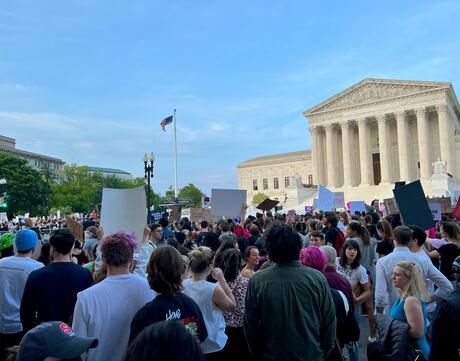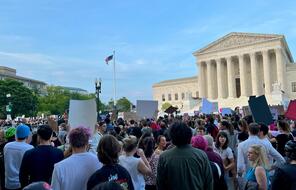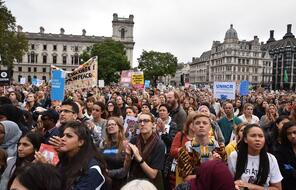Use the Slides for this mini-lesson to project two charts from a Pew Research Center article that show different aspects of public opinion and partisan views of the Supreme Court.
After students view the first chart, ask them to discuss the following questions in pairs:
- What are three pieces of information you can learn from this chart?
- What explanations—if any—can you think of for the trends shown in this chart?
Then, have students view the second chart and discuss the following questions in pairs:
- What are three pieces of information you can learn from this chart?
- What explanations—if any—can you think of for the trends shown in this chart?
- Do you think judges should bring their own political views into their decision-making? Why or why not?
After students have viewed and discussed each chart, ask for a few volunteers to share what they talked about in their pairs. Then, read the following excerpt from the Pew Research Center article Positive Views of Supreme Court Decline Sharply Following Abortion Ruling as a class:
Americans’ ratings of the Supreme Court are now as negative as – and more politically polarized than – at any point in more than three decades of polling on the nation’s highest court.
Following a term which saw the Dobbs v. Jackson ruling ending the federal guarantee of the right to abortion along with several other high profile cases that often split the justices along largely ideological lines, this shift in views of the court has been driven by a transformation in Democrats’ views.
Just 28% of Democrats and Democratic-leaning independents now view the court favorably, down 18 percentage points since January and nearly 40 points since 2020. Positive views of the court among Republicans and Republican leaners have increased modestly since the start of the year (73% now, 65% then).
As a result, the partisan gap in favorable views of the Supreme Court – 45 percentage points – is wider by far than at any point in 35 years of polling on the court.
The new national survey by Pew Research Center, conducted among 7,647 adults from Aug. 1 to 14, finds the public overall is split in its views of the Supreme Court: 48% of the public holds a favorable view of the court, while a similar share (49%) holds an unfavorable view.
Positive opinions of the Supreme Court have steadily declined among the U.S. public since August 2020, when 70% of Americans held favorable views of the court.
Discuss with your students:
- How does the information from this excerpt connect to what you learned from looking at the charts?
- What new information did you learn from this excerpt?
Finally, ask students to read the following quote from the US News article Historically Low Public Trust, Legitimacy Questions Mar Supreme Court’s Return:
The court doesn't have an army that it sends in to enforce its decisions,” Jessica Levinson, a professor at Loyola Law School, says. “They rely on us thinking they're legitimate. And so a crisis of confidence or a feeling that the court is illegitimate, and that they're just packed with political actors, not judges, it can truly become a crisis... They rely on us adhering to what they say even when we vehemently disagree with it.
Create a Graffiti Board with the following questions and ask students to write their responses under one or both of them:
- What could make people willing to accept Supreme Court decisions even when they disagree with them?
- Why does it matter if people trust the Supreme Court?
(Note: If you teach additional activities from this mini-lesson, you can ask students to revisit the Graffiti Board and add additional responses.)



















